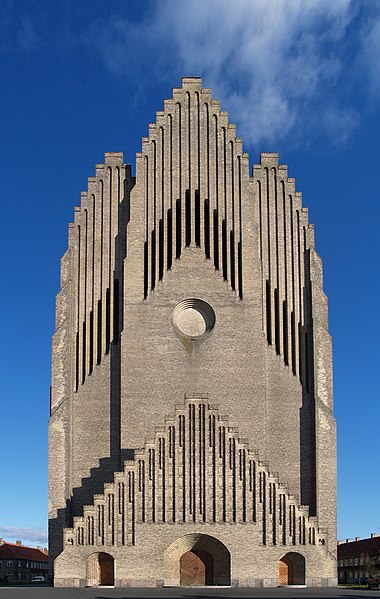Difference between revisions of "How to Adopt from Denmark Part 2"
(Created page with "{{#eimage:http://upload.wikimedia.org/wikipedia/commons/thumb/a/ae/Pv_jensen-klint_05_grundtvig_memorial_church_1913-1940.jpg/380px-Pv_jensen-klint_05_grundtvig_memorial_churc...") |
(No difference)
|
Latest revision as of 02:52, 8 October 2014
This page explains step 5 of How to Adopt from Denmark. To learn more about steps 1-4 please read How to Adopt from Denmark and to learn about step 6 please read How to Adopt from Denmark Part 3.
5. Adopt the Child (or Gain Legal Custody) in Denmark:
Remember: Before you adopt (or gain legal custody of) a child in Denmark, you must have completed the above four steps. Only after completing these steps, can you proceed to finalize the adoption or grant of custody for the purposes of adoption in Denmark.
The process for finalizing the adoption (or gaining legal custody) in Denmark generally includes the following:
- ROLE OF THE REGIONAL STATE ADMINISTRATION: Prospective adoptive parents file their initial application with the local Joint Council of the Regional State Administration in the jurisdiction where they reside. A Joint Council consists of three members - a social worker, a lawyer, and a medical officer. The Joint Council determines whether the initial application for adoption may be approved for further processing. A complete list can be found at the Joint Councils. The Danish National Board of Adoption supervises the Joint Councils, observes national and international developments in adoption matters, collects information concerning adoption, negotiates with authorities and organizations in other countries, and supplies general information. Decisions reached by the Joint Councils may be appealed to the Danish National Board of Adoption at: Danish National Board of Adoption Kristineberg 6, 1470 Copenhagen, Tel: +45-3392 3302, Fax: +45-3927 1889, Email: an@adoptionsnaevnet.dk, Web site: Danish National Board of Adoption. Domestic adoptions in Denmark are processed via the five Regional State Administrations in the jurisdiction where the prospective parents reside. Prospective adoptive parents file an application with the Joint Council of their Regional State Administration. The application is processed in three phases. For more detailed information, please visit the web site for the Danish National Board of Adoption, http://www.adopt.dk, and click on “English Language Version.”
- 1. The first phase determines whether the applicants meet the general eligibility requirements for adoptive parents. Applicants cannot proceed to phase two without approval by the Joint Council.
- 2. The second phase is a pre-adoption counseling training program, mandatory for all applicants who have not previously adopted a child. The purpose of the training is to supply applicants with information concerning different aspects of adoption, and to provide a basis for the applicants themselves to determine whether or not they possess the necessary resources (financial as well as parenting abilities) to adopt a child. The training course runs over a weekend and a half (one weekend session, followed by one Saturday or Sunday session). Participation in a pre-adoption training program costs Danish Kroner 2,500 (approximately USD 450).
- 3. The third phase includes one or more interviews with the secretariat of the Joint Council. At the end of the third phase, a home study report is presented to the Joint Council for final decision and approval. The prospective parents proceed by submitting their approval to one of the Danish government-authorized adoption agencies.
- ROLE OF THE COURT: The Regional State Administration is responsible for issuing the Adoption Certificate, and finalizing the adoption. According to Danish law, the adopted child has the same rights as a biological child.
- ROLE OF ADOPTION AGENCIES: Adoption agencies are accredited by the Danish government to provide adoption services.
- TIME FRAME: From the initial contact with the Joint Council at the Regional State Administration until the adoptive parents can be united with the child, the time frame is on average 35 months.
- ADOPTION FEES: In the adoption services contract that you sign at the beginning of the adoption process, your agency will itemize the fees and estimated expenses related to your adoption process. Domestic adoptions of Danish children are free of charge. The cost of an intercountry adoption (adopting a child in a third country and then taking him or her to Denmark to reside) can be high, often ranging between USD 20,000 – 30,000 depending on the country of the child’s origin. Travel expenses must be added to this amount. Once the adoption has been finalized, the adoptive parents are entitled to a Danish Government lump-sum relief benefit to help reduce their overall expenses.
- DOCUMENTS REQUIRED: The initial application form, which can be obtained from the Regional State Administration (Statsforvaltning), must be accompanied by the following documents: birth certificate, marriage certificate, latest tax return, and certificate of health. An application to participate in the pre-adoption counseling program must be filed with the Department of Family Affairs, Office of Training Programs. If the applicants wish to continue the process after they complete the counseling program, a third application must be filed to start phase three. In the case of an adoption from a third country, when the child arrives in Denmark from his or her country of origin (after that country's adoption procedures have been completed), the adoptive parents must apply to the Regional State Administration for an Adoption Certificate. With the Adoption Certificate, the adoption is finalized, and pursuant to Danish law, the adopted child has the same rights as a biological child.
NOTE: Additional documents may be requested. You may be asked to provide proof that a document from the United States is authentic, read more on Traveling Abroad to learn about authenticating U.S. Documents.
Back to Adopting from Denmark
